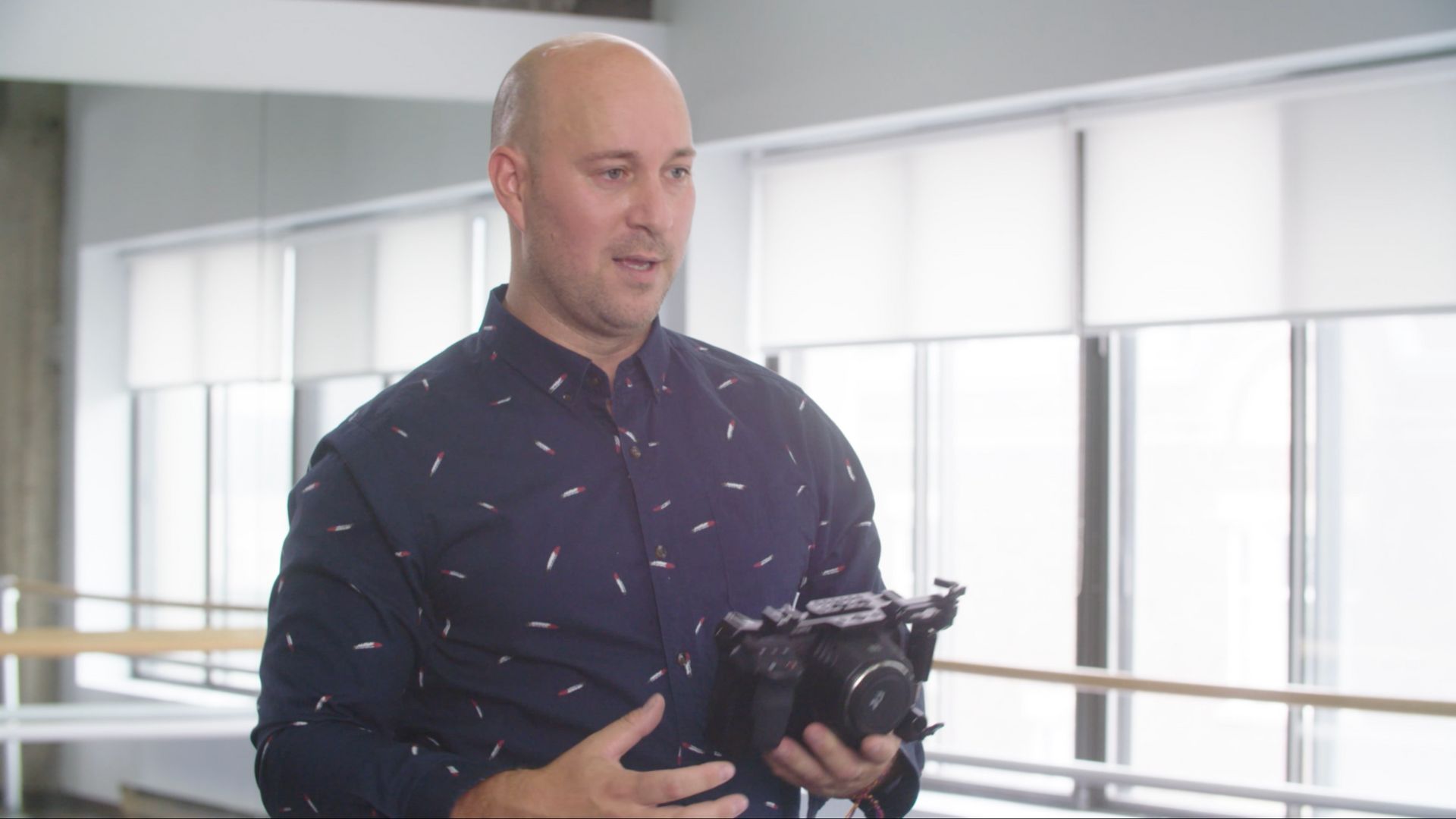Episode 8 - Technical requirements of video capture and uploading to the Web

Share on social media
Follow us

- Some concepts to explore
Coding/decoding is a type of formatting and compression of an audio or audiovisual feed, based on current published norms and standards. Webcasting software or hardware encodes the file for the webcaster and offers a choice of type of file coding to ensure that it can be viewed by the webcast viewer.
Compression is a system to reduce the size of a computer file or audio or audiovisual feed. Reducing the size of a file results in less storage disc space being taken by reducing the number of Mbits needed. In webcasting, compression is necessary to ensure that the feed requires less speed from the Internet connection. Strong compression makes it possible to create feeds that can pass through a low-speed connection, but the image and sound (based on the compression rate) may degrade. Weak compression improves the quality of the feed but requires much higher speed connectivity. Compression is independent of coding/encoding. For example, an audiovisual feed can be coded in standand H264 or H265, but the decision may be made, at the same time, to compress it more or less so that the size of the file is not too large in relation to the connectivity speed.
Internet speed is the measurement of the number of megabites per second (Mbps). This can refer to the download speed or upload speed of a file. The speed of the Internet connection is a critical factor not only in webcasting but also, generally, in the participation of the digital community. According to the Government of Canada website, a “quick” connection speed should be 50 Mbps when uploading and 10 Mbps when downloading. The speed required to create a webcast depends on four factors: the resolution of the feed (Full HD, 4K, among others), the number of frames per second (usually 30 or 60), the type of coding/decoding, and the type of compression.
For live webcasting by phone, a minimum 4G connection is required to ensure that the image and sound are of sufficiently high quality in both resolution and number of images per second. For information purposes, below is a detailed description of the required speed ranges recommended for a webcast in the most common resolution (Full HD or 1920 x 1080 pixels), in relation to the rate of frames per second (FPS). The variation ranges are based on the quality of coding/decoding and compression, 24 or 30 FPS between 3 and 6 Mbps, and 60 FPS between 5 and 9 Mbps.
The growing need for a stable high-speed Internet is a challenge in a large country like Canada, especially for rural areas and areas far from large cities, even if proprietary and satellite solutions, such as Starlink, are possible and make high-speed download/upload easier in the most remote areas. But these solutions are still rare and expensive. The issue of Internet speed is not only a technical question but also a political and inclusive one.
Technical mixing and formatting process for the audio mastering of a project, making immersive sound listening possible with great spatial precision. Each artist can place each sound, each voice, each musical instrument in a precise position in the sound space. Some production studios offer the audio recording of captures or videodances in Dolby Atmos. This format requires Dolby Atmos certified equipment, but it has been widely adopted by many makers of audio broadcasting devices and desktop or laptop computers. For example, all Apple computers and even Apple headsets, some Intel, Lenovo, and Huawei computers, and many others are certified with the Dolby Atmos standard. Another basic feature of Dolby Atmos is that it can be listened to on any certified brand equipment. This format is not linked to a specific brand or configuration of speakers: if the device is certified, one can have a 2.1 system (two speakers and a subwoofer), a 5.1, 7.1 system, or a headset. In all these configurations, one can enjoy an immersive Dolby Atmos sound, regardless of the number of speakers. A final essential feature is that a file recorded in this format can be listened to on traditional uncertified mono, stereo, or surround speakers.
Frames per second (FPS) is the number (or rate) of images per second (IPS) or the quantity of images recorded by a video or motion picture camera in a second. It is also the number of images per second viewed by the viewer of a webcast. The higher the number of IPS, the more the movements of the body, camera, or object are fluid and clean. A high rate of images per second increases the size of a file considerably, which in turn generates the need for a faster Internet connection. The rate of IPS is one of the four main quality factors of a webcast feed, impacting uploading and downloading speeds. The other factors are the resolution, the coding/decoding system of the feed, and the type of file compression. The most current rates of IPS used in live webcasting in Canada can be summed up, as follows:
– 24 (most used in motion pictures, but also used in webcasting, capture, and videodance)
– 29.97 or 30 (the most current rates)
– 60 (produces a more fluid and cleaner image but less used because it requires double the Mbps in upload and download speeds from viewers.
Habillage is the sum of all the graphic elements added before, during and after a webcast, which make it possible to provide additional information. In webcasting, for example, these include: the first image before the transmission, announcing that it will begin; the final countdown before it starts; an image signaling a potential technical problem; and images with artistic and production credits that appear at the end of the performance. Other examples of habillage include banners placed in the lower third of the image containing the names of the speakers on the image and theatre and coproducers logos.
The vast majority of webcasts are recorded in Full HD resolution because sending a 4K feed by Internet requires very high speed, i.e., four times greater than with Full HD resolution, a speed that not everyone necessarily has at home. That said, it is important that the recording of the webcast be in 4K, 6K, or greater resolution to allow the image to be reframed in post-production without losing quality or the image degrading.
Real time is the computer processing of media (audio, video, text) perceived as immediate. When the processing delay is less than the latency of human perception, the sensation is that the processing is being done in real time. For example, two sounds triggered with a less than 5 millisecond delay between them are perceived as a single sound by the human ear. Hence, the latency of sound perception is less than 5 milliseconds. Beyond the math, this concept is important to understanding that interaction in real time must be programmed on devices capable of creating the illusion of immediacy, i.e., processing information quickly.
The focus puller is the person who, when necessary, adjusts the focus of the camera lens. In practical terms, if the DOP is physically engaged in the camera movements, they cannot manually adjust the focus at the same time.
Broadcast refers to the broadcast itself and/or the act of broadcasting. In the history of mass communication, broadcasting is used in the case of radio transmission of television because it is broadcast (cast) from a single point to a large (broad) audience. In the specific case of a broadcast on the Internet, the term used is webcast, a new version of broadcasting via a network rather than radio waves.

Next episode



